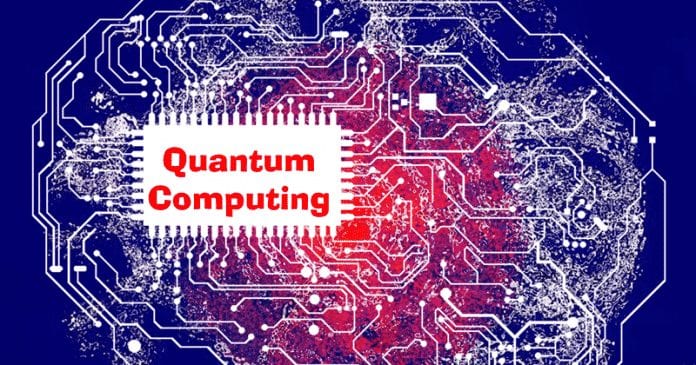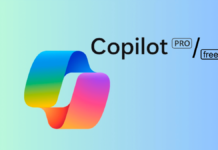We all know very well that it is not easy to precisely locate in time the exact moment in which quantum computing began to make noise beyond the academic and research fields. Perhaps the most reasonable is to accept that this development began to be known by the general public about two decades ago, during which classic computers experienced a remarkable devestory.
What is Quantum Computing, And How Does It Works?
It is not easy to precisely locate in time the exact moment in which quantum computing began to make noise beyond the academic and research fields. Perhaps the most reasonable is to accept that this development began to be known by the general public about two decades ago, during which the classic computers have experienced remarkable stories.
But, some scientists defend with a certain intensity that the quantum computation to which we aspire is impossible, like Gil Kalai, an Israeli mathematician who teaches at Yale University; the truth is that he has advanced a lot during the last few years.
Also Read: How to Secure your Computer from Identity Thieves
From the outside, it may seem like an “eternal promise”, but the advances we are witnessing, such as the construction of the first 50-bit functional prototype IBM is working on, invite us to be honestly positive. Yes, the challenges facing mathematicians, physicists, and engineers are almost considerable, making this development even more exciting.
Quantum computing: What it is and how it works?
Quantum computing is reputed to be complicated and, therefore, difficult to understand, and it is true that if we go deep enough into it, quantum computing becomes very complex. The reason is that its foundations are based on principles of quantum physics that are not natural because their effects cannot be observed in the macroscopic world in which we live.
The first concept we want to know is the cube or qubit, which is nothing but the contraction of the words. And to understand what a qubit is, it is good for us to review previously what a bit is in classical computing.
In the computers we currently use, a bit is the minimum unit of information. Each of them can adopt one of two possible values at any given time: 0 or 1. But with a single bit, we can hardly do anything. Hence it is necessary to group them in sets of 8 bits known as bytes or octets. On the other hand, the bytes can be grouped into “words”, which can have a length of 8 bits (1 byte), 16 bits (2 bytes), 32 bits (4 bytes), and so on.
If we carry out the simple calculation about which just I have spoken, we will verify that with a set of two bits, we can encode four different values (2 2 = 4), which would be 00, 01, 10, and 11. With three bits, our options are increased to eight possible values (2 3 = 8). With four bits, we will get sixteen deals (2 4 = 16), and so on.
Of course, a set of bits can only adopt a single value or internal state at a given time. It is a reasonable restriction that seems to have a clear reflection in the world we observe, as a thing can not simultaneously have both properties.
This evident and fundamental principle, curiously, does not occur in quantum computing, and the qubits, which are the minimum unit of information in this discipline, unlike the bits, do not have a single value at a given time; what they have is a combination of the zero and one states simultaneously.
The physics that explains how the quantum state of a qubit is encoded are complex. Going deeper into this part is unnecessary to continue with the article. Still, interestingly, we know that the quantum state is associated with characteristics such as the spin of an electron, which is an essential property of elementary particles, just like the electric charge derived from its moment of angular rotation.
These ideas are not intuitive, but they have their origin in one of the fundamental principles of quantum mechanics, known as the principle of superposition of states. And it’s essential because it largely explains the enormous potential that quantum processors have.
In a classical computer, the amount of information we can encode in a particular state using N Bits, which has size N, but in a quantum processor of N qubits, a specific form of the machine is a combination of all possible collections of N ones and zeros.
Each of these possible collections has a probability that indicates, in some way, how much of that particular collection is in the internal state of the machine, which is determined by the combination of all possible groups in a specific proportion indicated by the probability of each of them.
As you can see, this idea is somewhat complex. Still, we can understand it if we accept the principle of quantum superposition and the possibility that the state of an object is the result of the simultaneous occurrence of several options with different probabilities.
A significant consequence of this property of quantum computers is that the amount of information that contains a particular state of the machine has size 2 n, and not n, as in classical computers. This difference is essential and explains the potential of quantum computing, but it can also help us to understand its complexity.
If, we go from working with n bits to doing it with n + 1 bits in a classic computer, we will increase the information that stores the machine’s internal state in a single bit. However, if in a quantum computer we go from working with n qubits to doing it with n + 1 qubits, we will be duplicating the information that stores the machine’s internal state, which will go from 2 n to 2 n + 1. This means that the increase of the capacity of a classical computer as we introduce more bits is linear. In contrast, in the case of a quantum computer, as we increase, the number of qubits is exponential.
We know that bits and qubits are the minimum information units that classical and quantum computers handle. The logic gates, which implement the logical operations of Boolean Algebra, allow us to operate with bits in classic computers.
The latter is an algebraic structure designed to work on expressions of the propositional logic, which have the peculiarity that they can only adopt one of two possible values, true or false, hence this algebra is also perfect for carrying out operations in systems digital binaries, which, therefore, can also be adopted at a given time only one of two possible values “0 or 1”.
The logical operation AND implements the product, the OR operation, the sum, and the NOT process invert the result of the other two, which can be combined to implement the NAND and NOR operations.
These, together with the operation of exclusive addition (XOR) and its negation (XNOR), are the basic logical operations with which the computers we all use currently work at a low level. And with them, they can solve all the tasks we carry out.
We can surf the Internet, write texts, listen to music and play games, among many other possible applications, thanks to our computer’s microprocessor capable of carrying out these logical operations. Each of them allows us to modify the internal state of the CPU so that we can define an algorithm as a sequence of logical operations that modify the internal state of the processor until it reaches the value offered by the solution to a given problem.
A quantum computer will only be helpful if it allows us to carry out operations with the qubits, which, as we have seen, are the units of information it handles. Our goal is to use them to solve problems, and the procedure to achieve it is essentially the same as we had described when we talked about conventional computers, only that, in this case, the logic gates will be quantum logic gates designed to carry out quantum logical operations.
Moreover, we all know that the logical operations carried out by the microprocessors of classic computers are AND, OR, XOR, NOT, NAND, NOR, and XNOR, and with them, they can carry out all the tasks we do with a computer nowadays, as we told earlier.
Also Read: How To Recover Deleted Files From Your Computer
While the quantum computers are not very different, instead of using these logic gates, they use the quantum logic gates that we have managed to implement now, which are CNOT, Pauli, Hadamard, Toffoli, or SWAP, among others.
So, what do you think about this? Share all your views and thoughts in the comment section below. And if you liked this post, do not forget to share this post with your friends and family.



